



If the summer of 2022 was anything to go by, prolonged, harsher summers will become the norm within the next decade itself. And 2023 is no exception. There have been multiple warnings by the Intergovernmental Panel on Climate Change (IPCC), and most recently, the World Bank, of increasing debilitating heat stress in India.
Given the alarming data, cooling across sectors such as agriculture, supply chains, storage, and heating, ventilation, and air conditioning (HVAC) systems has become a developmental priority for India. This means that the electricity demand for cooling could skyrocket in the coming years.
While India has achieved almost universal electricity access, erratic power supply continues to be a challenge in rural India1. This can hamper access to cooling services, affect livelihoods, especially in the agriculture sector, and increase food insecurity.
The sun can help rural India’s cooling systems. Recognising the various energy needs and challenges that create a barrier for rural livelihoods, Decentralised Renewable Energy (DRE) can become an efficient power solution for increasing access to cooling services, especially in the agriculture, dairy farming and healthcare sectors. A decentralised renewable energy system is an approach to locating clean energy production facilities closer to the site of energy consumption.
DRE-powered refrigerators and cold storages, for example, could help small-scale rural farmers and micro-entrepreneurs reduce wastage of farm and dairy products as well as their electricity bills. According to Devidayal Solar, a CEEW-Villgro Powering Livelihoods enterprise, end-users saw an increase of Rs 7,000-10,000 in their average monthly income by utilising solar refrigerators. This was due to reduced energy costs and a decrease in food spoilage.
Udaipur-based Jovaki Agro Foods Pvt Ltd further illustrates the benefits of using solar refrigerators. An end-user of Devidayal Solar, Jovaki processes fruit such as custard apples, amla, and jamun locally. Then they freeze and store the pulp to make it available to industries throughout the year. However, due to intermittent and erratic electricity supply, the company faced challenges in storing the pulp, which led to wastage.
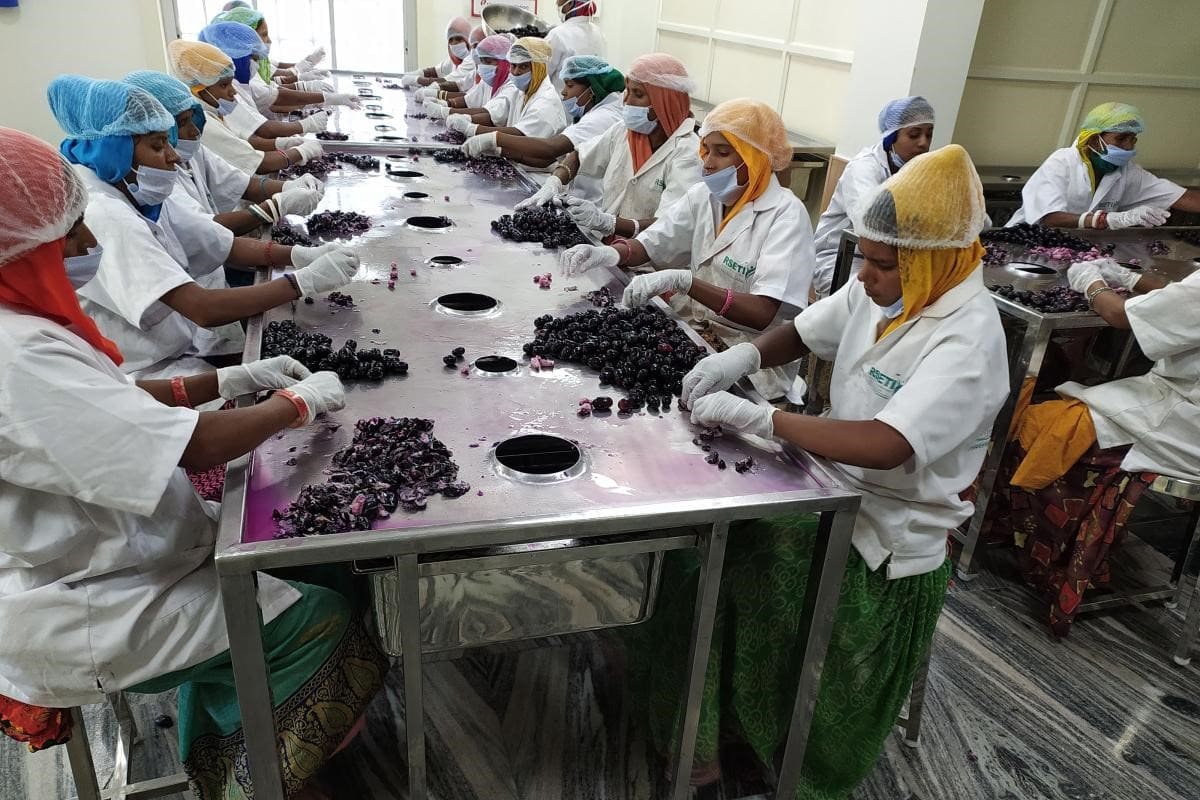
Group of rural women from Jovaki Agro Foods Pvt. Ltd processing jamun. Source: CEEW
To reduce their losses and tackle unreliable power supply, the company purchased six solar Direct Current (DC) refrigerators in 2020. The solar refrigerators helped them increase the production of fruit pulp from 10 to 18 metric tonnes seasonally. The annual turnover of the company was Rs 1.5 crore in 2022.
Harshita Maroo, execution manager of Jovaki says, “We work in remote village areas where there is a consistent issue of electricity. Due to this, we have to send all the material prepared to the nearest city quickly. DD Solar Fridge came to our rescue. Now with the help of their solar fridges, we are able to store our products at the village level. This is enabling us to expand more decentralised units.”
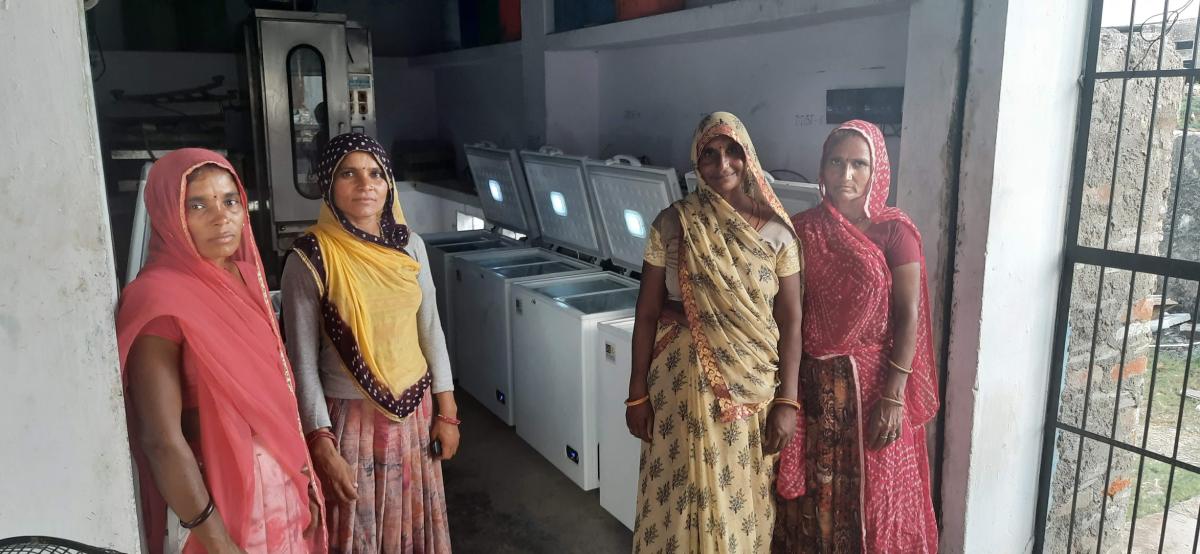
Group of women from Maitree Mahila dairy & agriculture producer company using solar refrigerators in their dairy business. Source: CEEW
Despite its potential to cater to India’s environmental and economic challenges, the adoption of DRE-based refrigerators and cold storage still faces several roadblocks including:
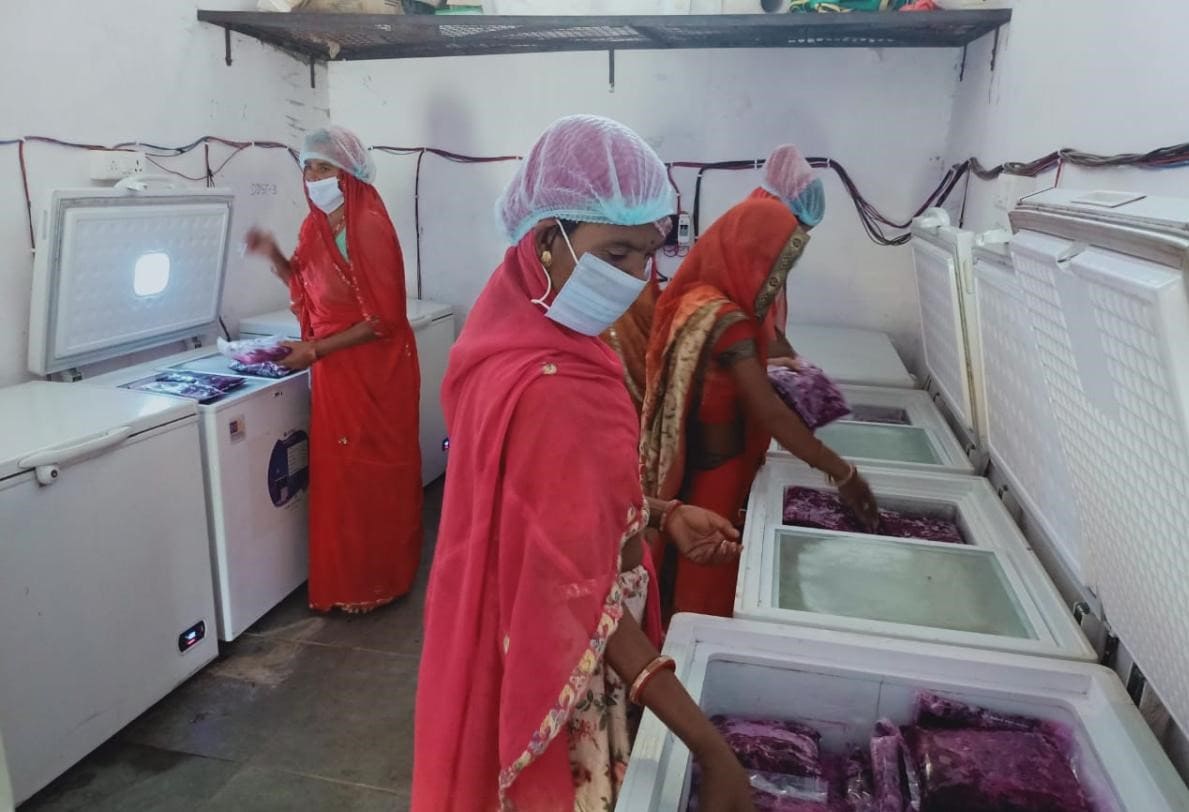
DD Solar’s refrigerator supports rural women in storing products and enhancing their income. Source: CEEW
The application of DRE technologies for cooling can bring transformative socio-economic changes in rural micro-entrepreneurs. It can help businesses adapt to increasing heat stress and ensure enhanced income generation for rural India. To increase adoption of DRE in the refrigeration and cooling sectors, we recommend:
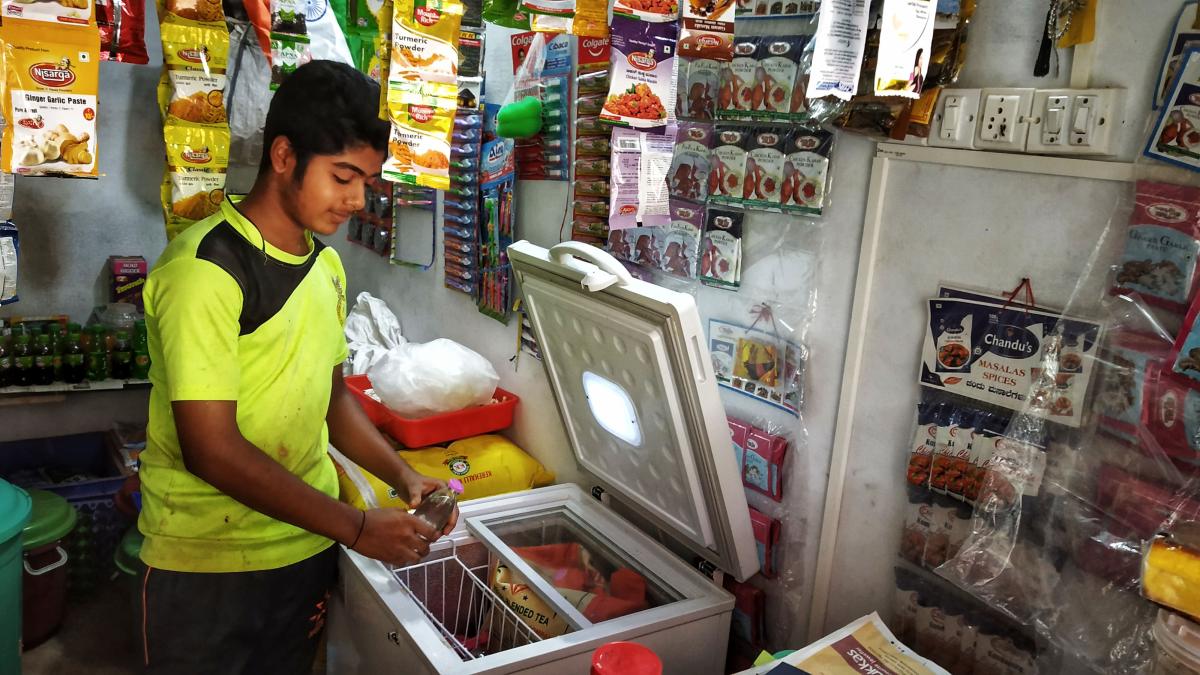
Solar refrigerators supports micro-entrepreneurs such as Kirana stores to increase the shelf-life of their products. Source: CEEW
Developing policies for the sector: The Ministry of New and Renewable Energy (MNRE) has drafted a policy framework for developing and promoting DRE-based livelihood applications. For example, unlocking easy access to end-user finance and enabling a market-oriented ecosystem to attract private sector investment to deploy DRE-based livelihood applications.
The convergence of all the stakeholders in the ecosystem is vital for clean technologies such as solar refrigerators to become a low-risk, easy-to-access springboard for rural micro-entrepreneurs in India.
Notes
1 India has an electrification rate of 99.93% per the Saubhagya Dashboard.



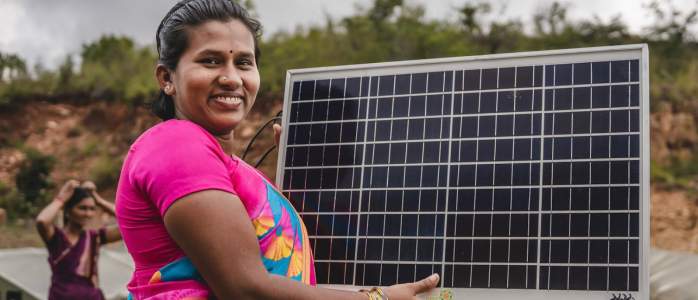
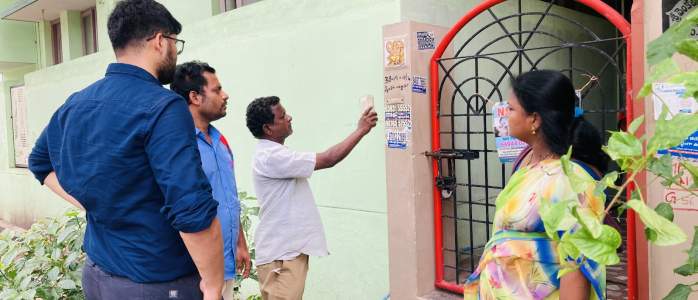
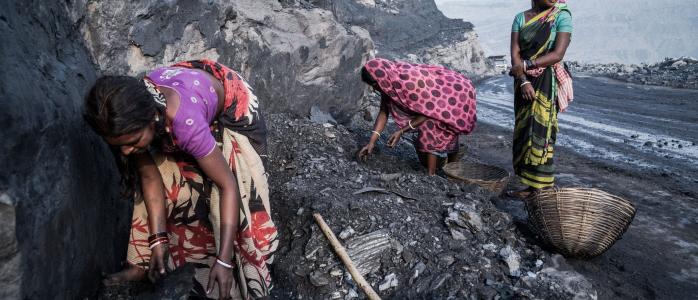
Add new comment